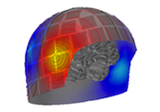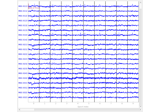mne.read_epochs_kit#
- mne.read_epochs_kit(input_fname, events, event_id=None, mrk=None, elp=None, hsp=None, allow_unknown_format=False, standardize_names=False, verbose=None)[source]#
Reader function for Ricoh/KIT epochs files.
- Parameters:
- input_fname
str Path to the sqd file.
- events
arrayofint, shape (n_events, 3) The array of events. The first column contains the event time in samples, with first_samp included. The third column contains the event id. If some events don’t match the events of interest as specified by event_id, they will be marked as
IGNOREDin the drop log.- event_id
int|listofint|dict|None The id of the events to consider. If dict, the keys can later be used to access associated events. Example: dict(auditory=1, visual=3). If int, a dict will be created with the id as string. If a list, all events with the IDs specified in the list are used. If None, all events will be used and a dict is created with string integer names corresponding to the event id integers.
- mrk
None|str| array_like, shape (5, 3) |listofstror array_like Marker points representing the location of the marker coils with respect to the MEG Sensors, or path to a marker file. If list, all of the markers will be averaged together.
- elp
None|str| array_like, shape (8, 3) Digitizer points representing the location of the fiducials and the marker coils with respect to the digitized head shape, or path to a file containing these points.
- hsp
None|str|array, shape (n_points, 3) Digitizer head shape points, or path to head shape file. If more than 10,000 points are in the head shape, they are automatically decimated.
- allow_unknown_formatbool
Force reading old data that is not officially supported. Alternatively, read and re-save the data with the KIT MEG Laboratory application.
- standardize_namesbool
If True, standardize MEG and EEG channel names to be
"MEG ###"and"EEG ###". If False (default), native channel names in the file will be used when possible.- verbosebool |
str|int|None Control verbosity of the logging output. If
None, use the default verbosity level. See the logging documentation andmne.verbose()for details. Should only be passed as a keyword argument.
- input_fname
- Returns:
- epochsinstance of
Epochs The epochs.
- epochsinstance of
Notes
New in version 0.9.0.

